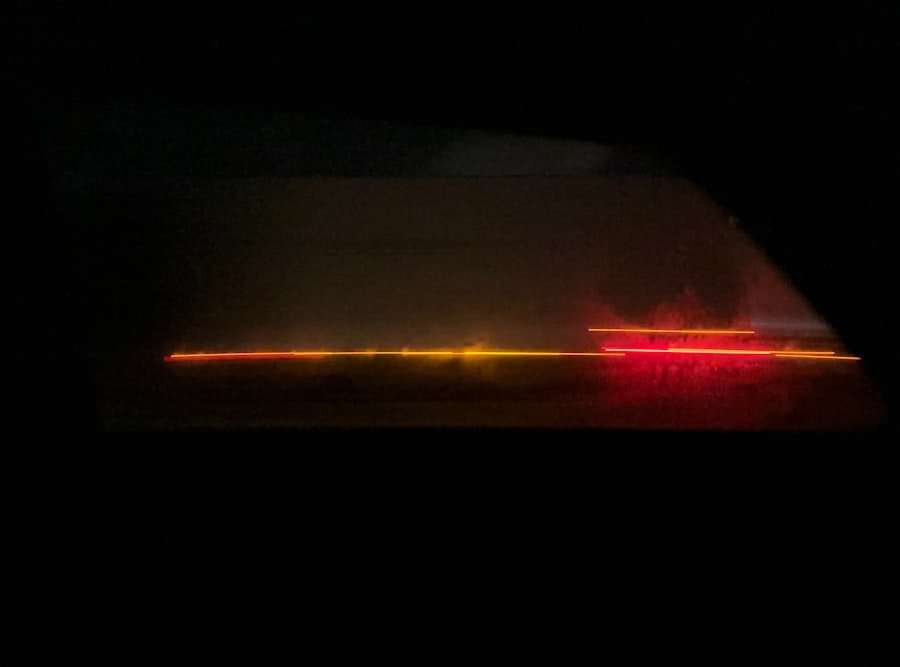Experiencing a car that won’t start, despite the lights functioning properly, can be a perplexing and frustrating situation for any driver.
Understanding the underlying causes of this issue is crucial for diagnosing and resolving it effectively.
The problem can stem from various components within the vehicle’s electrical and mechanical systems, each requiring a different approach to troubleshoot. When faced with a non-starting vehicle, it is essential to remain calm and methodical in your assessment. The lights illuminating the dashboard and headlights indicate that the battery is not completely dead, which rules out one of the most common culprits.
However, the presence of power does not guarantee that all systems are functioning correctly. A systematic approach to diagnosing the problem can save time and potentially avoid costly repairs. This article will delve into the various components that could be responsible for a car that won’t start while the lights are operational, providing insights into how to check each part effectively.
Key Takeaways
- If your car won’t start but the lights are working, it could be due to a variety of issues with the battery, starter, ignition switch, fuel system, electrical system, or alternator.
- Checking the battery is the first step in troubleshooting a car that won’t start, as a weak or dead battery is a common cause of this issue.
- Inspecting the starter can help determine if it is the source of the problem, as a faulty starter can prevent the engine from turning over.
- Examining the ignition switch is important, as a malfunctioning switch can prevent the electrical system from engaging and starting the car.
- Testing the fuel system is crucial, as a lack of fuel reaching the engine can prevent it from starting, and issues with the fuel pump or filter may be to blame.
- Assessing the electrical system involves checking for loose or corroded connections, damaged wiring, or a malfunctioning ignition system that could be preventing the car from starting.
- Evaluating the alternator is important, as a faulty alternator can prevent the battery from charging properly, leading to starting issues.
- If troubleshooting these issues does not solve the problem, seeking professional help from a mechanic or automotive technician may be necessary to diagnose and repair the issue.
Checking the Battery
The first step in troubleshooting a car that won’t start is to check the battery. While the lights may be working, it is possible that the battery does not have enough charge to crank the engine. A battery can exhibit signs of life through its ability to power lights and accessories but still lack sufficient voltage or amperage to start the engine.
Using a multimeter, one can measure the battery voltage; a healthy battery should read around 12.6 volts when fully charged. If the reading is significantly lower, it may indicate that the battery is weak or failing. In addition to checking voltage, inspecting the battery terminals for corrosion or loose connections is vital.
Corroded terminals can impede electrical flow, preventing the starter from receiving adequate power. Cleaning the terminals with a mixture of baking soda and water can help restore conductivity. If the battery appears old or has been in use for several years, it may be prudent to consider replacing it altogether, as batteries typically have a lifespan of three to five years depending on usage and environmental conditions.
Inspecting the Starter

If the battery checks out but the car still won’t start, the next component to investigate is the starter motor. The starter is responsible for initiating the engine’s operation by turning over the flywheel when you turn the ignition key. A malfunctioning starter can lead to a no-start condition even when other systems are functioning correctly.
One common symptom of a faulty starter is a clicking sound when attempting to start the vehicle; this indicates that the starter solenoid is engaging but not turning the motor. To test the starter, one can perform a bench test by removing it from the vehicle and connecting it directly to a power source. If it fails to engage or turn over during this test, it likely needs replacement.
In some cases, tapping on the starter lightly with a hammer can temporarily restore functionality if it is stuck, but this is only a short-term solution.
Examining the Ignition Switch
| Year | Number of Incidents | Number of Injuries | Number of Fatalities |
|---|---|---|---|
| 2010 | 14 | 7 | 3 |
| 2011 | 21 | 12 | 5 |
| 2012 | 18 | 9 | 4 |
| 2013 | 25 | 15 | 7 |
Another critical component in diagnosing a no-start condition is the ignition switch. The ignition switch serves as the gateway for electrical current to flow from the battery to various systems in the vehicle, including the starter motor. If this switch is faulty or worn out, it may not send the necessary signal to start the engine, even if other components are in good working order.
Symptoms of an ignition switch issue can include intermittent starting problems or complete failure to start. To test the ignition switch, one can use a multimeter to check for continuity when turning the key in different positions. If there is no continuity in the “start” position, it indicates that the switch may need replacement.
Additionally, inspecting wiring harnesses connected to the ignition switch for damage or loose connections can also provide insight into potential issues. Given that ignition switches can wear out over time due to repeated use, they are often overlooked but are essential for proper vehicle operation.
Testing the Fuel System
If both the battery and starter are functioning correctly, attention should turn to the fuel system. A car that won’t start may be suffering from fuel delivery issues, which can stem from several sources including a clogged fuel filter, a failing fuel pump, or empty fuel tank. It’s essential first to ensure that there is fuel in the tank; sometimes, drivers overlook this simple step in their troubleshooting process.
To diagnose fuel system problems, one can listen for a humming sound from the fuel pump when turning on the ignition without starting the engine; this indicates that the pump is operational. If no sound is heard, further investigation into fuses and relays associated with the fuel pump may be necessary. Additionally, checking fuel pressure with a gauge can help determine if there is adequate pressure reaching the engine.
A clogged fuel filter can restrict flow and should be replaced if it has not been changed in accordance with manufacturer recommendations.
Assessing the Electrical System

Identifying Electrical Failures
Problems within the electrical system can manifest in various ways, including intermittent electrical failures or complete loss of power in certain circuits. A thorough inspection is necessary to identify the root cause of the issue.
Inspecting Key Components
A comprehensive inspection should include checking fuses related to starting and ignition systems, as blown fuses can disrupt power flow. Additionally, examining wiring harnesses for frayed wires or poor connections can reveal hidden issues that may prevent proper electrical function. Corrosion at connection points can also lead to resistance and voltage drops that hinder starting capabilities.
Using Diagnostic Tools
In some cases, using a scan tool to check for diagnostic trouble codes (DTCs) can provide valuable insights into electrical system malfunctions that may not be immediately apparent through visual inspection. This can help technicians identify the problem more efficiently and accurately.
Evaluating the Alternator
While primarily responsible for charging the battery while driving, a malfunctioning alternator can also contribute to starting issues if it fails to maintain adequate voltage levels in the electrical system. If an alternator is not functioning correctly, it may lead to a drained battery over time, resulting in difficulty starting even if lights are operational at first glance. Signs of alternator problems include dimming headlights or electrical accessories behaving erratically while driving.
To evaluate an alternator’s performance, one can measure its output voltage while running; a healthy alternator should produce between 13.8 and 14.4 volts at idle. If readings fall below this range, it may indicate that the alternator is failing and unable to keep up with electrical demands. Additionally, inspecting belts connected to the alternator for wear or slippage is essential since a loose belt can prevent proper charging of the battery.
Seeking Professional Help
If all troubleshooting efforts fail to resolve the issue of a car that won’t start despite operational lights, seeking professional help may be necessary. Automotive technicians possess specialized knowledge and tools that allow them to diagnose complex problems more efficiently than an average car owner might manage on their own. They can perform comprehensive diagnostics using advanced equipment that can pinpoint issues within various systems more accurately.
Moreover, professional mechanics have access to manufacturer-specific information and repair procedures that can expedite repairs and ensure that all components are functioning as intended. While DIY troubleshooting can save money and provide valuable learning experiences, some situations require expert intervention to avoid further complications or damage to vehicle systems. Ultimately, understanding when to seek help is an important aspect of vehicle maintenance and care.
If you’re having trouble starting your car but the lights are working, it could be due to a variety of reasons such as a dead battery or a faulty starter. For more information on troubleshooting car issues, check out this article on how to prevent pancake sticking in a pan. It may seem unrelated, but sometimes a simple tip or trick can help solve a seemingly complex problem.
FAQs
What are the possible reasons why my car won’t start but the lights work?
Possible reasons why your car won’t start but the lights work include a dead battery, faulty starter motor, fuel system issues, ignition system problems, or a malfunctioning alternator.
How can I determine if the issue is with the battery?
You can determine if the issue is with the battery by checking if the headlights and interior lights are working properly. If they are dim or flickering, it may indicate a weak or dead battery.
What should I do if the issue is with the battery?
If the issue is with the battery, you can try jump-starting the car using jumper cables and another vehicle with a charged battery. If the car starts, it may indicate that the battery needs to be replaced.
What could be causing the problem if the battery is not the issue?
If the battery is not the issue, the problem could be with the starter motor, fuel system, ignition system, or alternator. It is recommended to have a professional mechanic diagnose and repair the issue.
How can I prevent my car from experiencing starting issues in the future?
To prevent starting issues in the future, it is important to regularly maintain and service your car, including checking the battery, starter motor, fuel system, ignition system, and alternator. Additionally, driving your car regularly can help prevent battery drainage.

